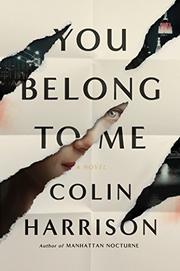Manhattan Beach Jennifer Egan (2017)
Jennifer Egan won the Pulitzer Prize for her 2010 collection of linked short stories, A Visit from the Goon Squad. The form of her fiction before 2017 was unconventional, so critics seem shocked that Egan was capable of producing, with the publication of Manhattan Beach, a traditional historical novel, especially since such novels are not fashionable at the moment. I had never read anything else by Egan, so I approached Manhattan Beach as a seasoned reviewer of multitudes of historical novels, and it’s a good one.
The setting is New York City, first in the depths of the Great Depression and then in the midst of World War II. Keep your finger on the front or back endpapers of Manhattan Beach so that you can refer to the map of the Brooklyn Naval Yard as it existed during World War II. This may help you locate and picture the scenes of the novel that take place there.
The plot? I hesitate to reveal much, since one of the pleasures of this novel is the intricacy of the entangled story lines, which the reader unravels with every turn of the page. The central character is Anna Kerrigan, whom we first meet as a child in 1934, when she accompanies her down-at-the-heels father, Eddie, on a visit to a mobster’s home, which overlooks Manhattan Beach. Both this locale and the title of the book point to the prominence of bodies of water as recurrent images in Egan’s writing. The mobster is Dexter Styles, whose back story we’ll learn. We’ll follow Eddie, too, as well as Anna’s severely disabled younger sister, Lydia. The characters in Manhattan Beach have to confront organized crime, Wall Street bankers, Park Avenue doctors, and Nazi submarines. It ain’t dull!
The main line of interest, however, is Anna, who reaches the age of 19 during World War II and is able, like many women of the period, to secure war-related employment at the Brooklyn Naval Yard. She hates the tedium of taking quality control measurements of small parts and escapes on her lunchtimes to the piers that jut out into the East River. Gazing at the water, she sees a diver in a bulky canvas suit slipping below the surface, and she has an epiphany. “Jealousy and longing spasmed through her. . . she felt a seismic rearrangement within herself. It was clear to her now she had always wanted to be a diver, to walk along the bottom of the sea. But this certainty was fraught with worry that she would be denied.” (62-3) Anna single-mindedly and aggressively pursues her quest to become a diver, repairing the underwater portions of vessels heading out to war. Although Rosie-the-Riveter was welcomed in factories that turned out bombers, Anna-the-Diver has a tougher time convincing the male authorities at the ship yard to connect her to an air hose and let her clamber down the ladder into the depths.
As Egan has explained in several author profiles (and as her acknowledgements at the end of the novel reveal), she exhaustively researched all the arcane detail in Manhattan Beach, learning not only about diving but also about the New York waterfront, nightclubs, Irish Americans, gangsters, and merchant marine ships. At times, Egan seems so anxious to assure her readers of the historical authenticity of her novel that she piles on the data, listing, for instance, too many product brand names or too many seafaring terms. This is a small complaint, as is my sense that some turns of plot are clichéd and that the denouement of Manhattan Beach is somewhat abrupt. Still, I was left with the feeling that I’d like to know more about the later lives of the characters, and that’s always a sign that the novelist has done a very good job of constructing those characters.
Manhattan Beach has been touted as one of the great novels of the decade. I wouldn’t go that far in my praise, but I did find it very well-crafted and solidly entertaining. Check it out! And for more New York mystery/adventure, read my reviews of Brendan Mathews's The World of Tomorrow and of Colin Harrison's You Belong to Me.



